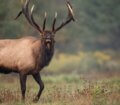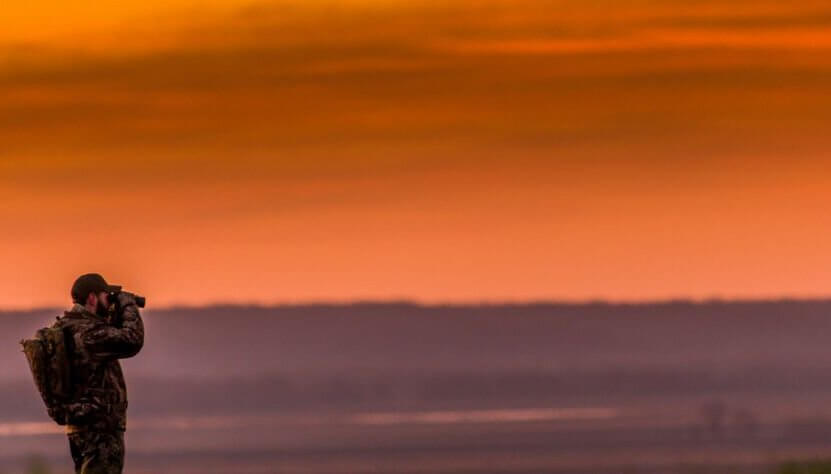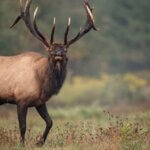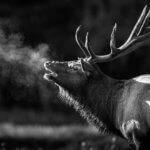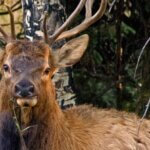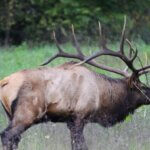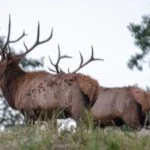Editor’s Note: Eddie Salter of Evergreen, Alabama, is known as Mr. Turkey – a title that speaks to his reputation of having won hundreds of turkey-calling contests and having had so-much success hunting gobblers. He’s also created turkey calls and sold them. Salter’s style of hunting is being aggressive. When he hears a turkey gobble, he wants to go to the tom and get as close as possible before taking him. Salter has learned that being a good turkey caller can make you a good elk hunter. (All artwork this week is courtesy of Dallen Lambson of Pocatello, Idaho, who’s won numerous awards, and has his artwork featured in Bass Pro Shops and Cabela’s stores.
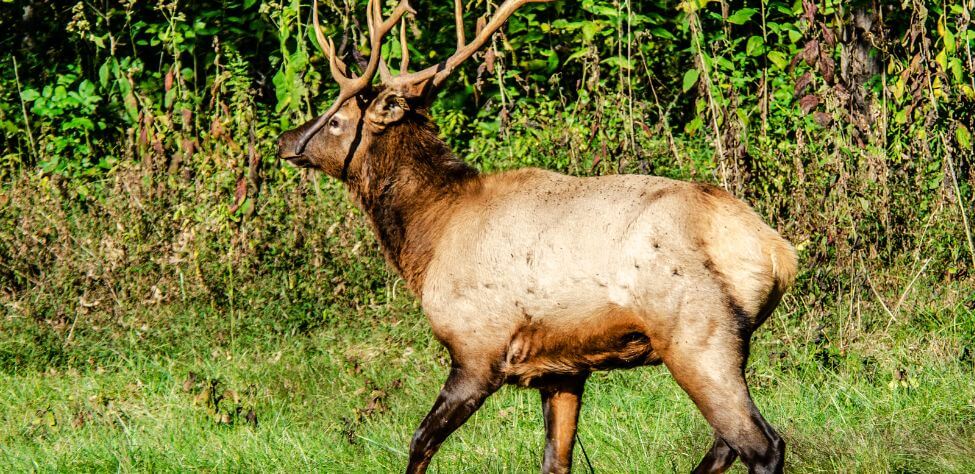
You can use a social bugle when hunting elk, which is what satellite bulls use to communicate. The social bugle is just a short version of the aggressive/challenge bugle. I feel like the cow elk are more comfortable when they hear a social bugle than when they hear a challenge bugle and may come to me. Sometimes, using the social bugle will fire-up a bull – especially when he sees his cows moving toward the social bugle. That bull probably thinks the satellite bull’s getting close to his cows.
On this day, three of us were elk hunting near the Jicarella Apache Nation Indian Reservation in New Mexico, and Jimmy Hill, our guide, next gave an estrous whine cow call. I think the bull we were calling to thought that there were two bulls at our location – a dominant bull and a satellite bull. Finally, the bull came in about 30 yards from me and stood below a cedar tree. I shot my bow and kept my eyes on him with my binoculars. Although I felt I’d made a good shot on the bull, my broadhead didn’t hit but one lung. After the elk took the arrow, he ran about 100 yards over to a cluster of trees and just stood there.
Jimmy kept whispering to me, “Eddie, hang tight. Don’t move, or do anything. Let’s just sit here for awhile.” I’d learned from Jimmy that even though I thought I’d made a good shot on a bull, the best thing to do was not to go after him right after I shot. I needed to give him 30 minutes to an hour or more to go down before starting to move to him. I could tell that bull was hurting, but he didn’t fall down.
On this hunt, Jimmy got the elk right up to me – making it more of a traditional elk hunt. I think that Jimmy had called that elk for at least an hour after we first heard him bugle. We did hear other elk bugling, while trying to pull this bull in, but this bull had a deep growl that he added on to the ends of his bugles. So, we could tell which elk was the herd elk from his bugling and growling in comparison to the satellite bulls that were calling all around us. To me, that bull sounded like he was the meanest bull in the herd.
Once this 300-inch class bull eased himself down to the ground and died, Jimmy drove his pickup truck right to the spot where my elk was down. We got him caped and skinned out, and the meat loaded rather quickly.
After examining the elk, I saw that he must have turned when I released the arrow. I was excited because I’d gotten a good shot on a good bull, but I was miserable because the bull didn’t go-down immediately.
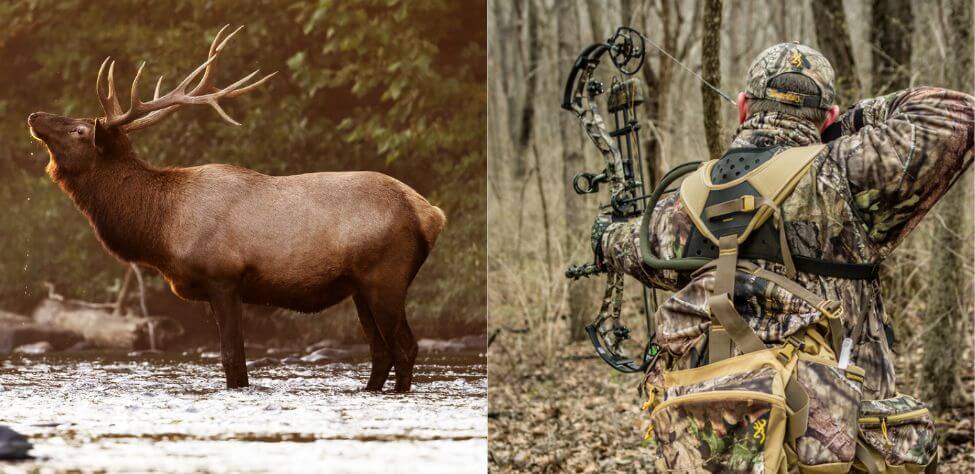
Due to how Jimmy talked and called, and the bull responded, I learned so much about elk calling, including when to call, and what to say to a bull, based on his reaction to the elk caller. I could understand why the bull came in; and everything about this hunt, and was able to relate this hunt to what I did to call turkeys – how I tried to get into the turkey’s brain and make him do what I wanted.
Any time you can harvest an elk with a bow, you’ve had a good day. But for me, I really enjoyed listening to Jimmy call, and the bull bugling back as well as learning how to call like Jimmy did. I could relate everything Jimmy was doing while calling the elk to the same way I would use calls to work a turkey gobbler.
I believe if you’re an avid turkey hunter who has gone to war with one or two turkeys, you have a good chance of taking an elk. You just need to learn to use the calls to give to the satellite bulls, the calls the satellite bulls will give, and the calls of a herd bull. Then you’ll know when to call and what to say and find taking elk much easier.
Successful elk hunting means communicating with the herd bull, the cows, and the satellite bulls and carrying on a conversation with the herd bull to bring him into gun range. Basically, the elk responds to the same types of calls I give to a turkey; and I try to get into the turkey’s head the same way that Jimmy attempted to get into the elks’ heads by giving the right call at the right time to the right elk to make the bull come to us. Whether you’re calling turkeys or bull elk, the main thing you want to do is start a conversation with them and continue to talk with them, until they walk up to where they’re within gun or bow range.
If you want to be an elk hunter, I strongly suggest that you spend some time with a guide. Then you can learn more quickly by paying attention to what your guide does to learn to call elk and make them do what you want. I can compare that to what the COVID pandemic did. When schools were shut down, and kids had to learn remotely, they didn’t learn as well or as fast as they did with a teacher who was an expert in the subject being taught in the classroom.
Tomorrow: Eddie Salter’s Double Shot Bull Elk
Expert Guidebooks on Elk Hunting: Best Sellers
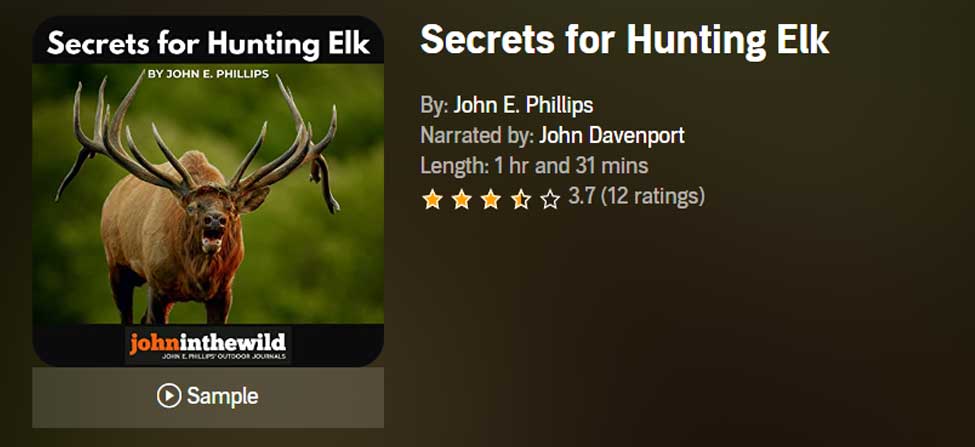
Secrets for Hunting Elk
The quickest, easiest (if there is an easy way), and safest way to find and take that bull elk of a lifetime will be to hunt with a guide.
Chad Schearer, a longtime Montana guide and TV personality, told me, “My hunter is my gun. If I get to the elk, and my hunter isn’t with me, then we don’t take the elk. My job is not only to find the elk but also to help the hunter get to the elk and make the experience as enjoyable as I can for him.” That’s the kind of fella with whom I want to go elk hunting.
An elk hunt can be tough, but it doesn’t have to be so tough that you don’t enjoy it. That’s why this elk hunting book starts with the confessions of an elk guide and with Chad Schearer’s philosophy of what the guide and the hunter’s relationship should be.
A good portion of your success will depend on your physical condition, and Matt Morrett of Harrisburg, Pennsylvania explains how an eastern hunter can get ready physically during June and July to hunt western elk, the animals he describes as, “Like deer or turkeys on steroids.”
Wayne Carlton, well-known elk hunter and TV and video personality from Montrose, Colorado, tells us what types of elk calls to use and what to say to the elk. Mike Miller of Colorado, another elk guide and Mossy Oak video personality, has tactics for the best equipment for bowhunting and gun hunting elk.
You’ll learn helpful strategies and hunting tips in this book, as well as some straightforward hunting methods that will help to make your elk hunt more successful.
“Thanks to the advice in your elk hunting books, I was able to call up a nice 6-point (6X6) bull elk! He was bugling like crazy. I called him in from about a ¼ mile away. Called him into bow range (about 40 yards away). It was a thrill!” ~Rob Brannon
VERSIONS: AUDIBLE & KINDLE
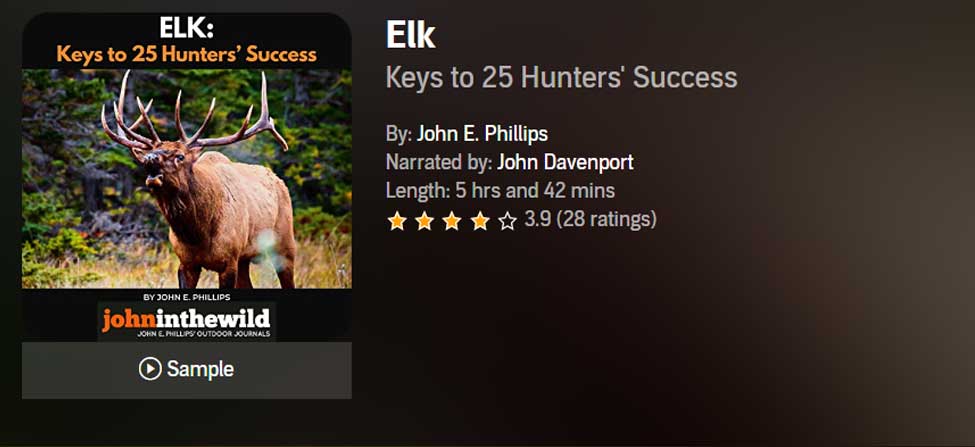
Elk: Keys to 25 Hunters’ Success
Often just one tip or tactic makes the difference in whether you take an elk home to dinner or have to hike back to the truck by yourself. In John E. Phillips’ latest elk book, Elk: Keys to 25 Hunters’ Success, you’ll learn from successful elk hunters the strategies they use to find and take elk.
Many know that the technique that seems to work most often is to hunt where other elk hunters don’t and understand where the elk are before you go on a hunt by studying data from each state, visiting HuntData (see chapter 1), examining maps, and reading postings on elk forums.
This book also tells you how to get ready physically for an elk hunt, including participating in Train to Hunt Competitions, what gear you need to take, how to enjoy a successful do-it-yourself elk hunt, or how to pick the best elk guide for you. You’ll also hear about the X System and the Broken Y System of hunting elk.
Although no one person has all the answers on how to help you find and take your elk, I’m convinced that this book’s outdoors men and women will teach you how to have satisfying elk hunts.
As my friend Karl Badger once told me, “Elk hunting doesn’t get any better than when I ride horses into the high backcountry, see two grizzly bears, hear a pack of wolves howl close to camp all night long, eat plenty of delicious food prepared on a fire and enjoy the company of good friends.”
VERSIONS: AUDIBLE, KINDLE & PRINT
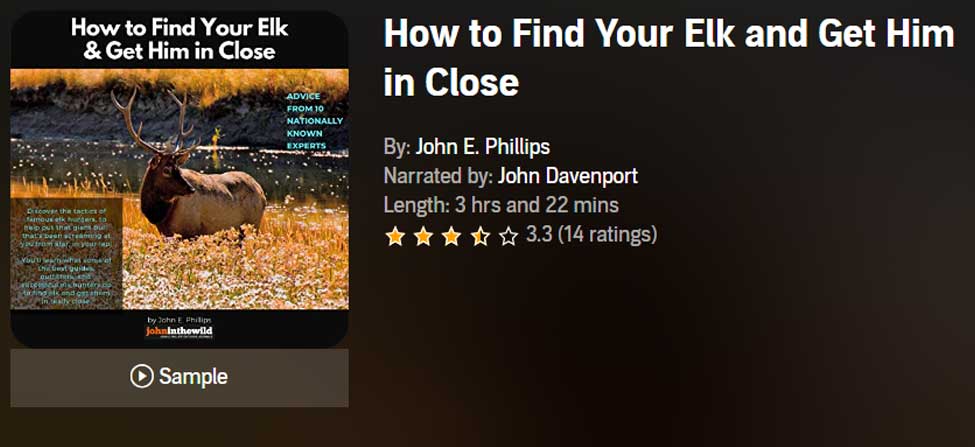
How to Find Your Elk and Get Him in Close will teach you the tactics of 10 nationally known elk hunters, to help put that giant bull that’s been screaming at you from afar, in your lap. You’ll learn what some of the best guides, outfitters, and successful elk hunters do to find elk and get them in really close.
Also in this audiobook, you’ll notice that the majority of the experts call elk to within bow range. We selected numerous bowhunters and bowhunting guides, since the bowhunter has to get much closer to a bull than the gun hunter does – often less than 20 or 30 yards – practically in your lap.
On one elk hunt, I’d heard this bull bugle all morning. My guide had called him within 30 yards, and he was standing just inside black timber. I saw the smoke from his nose wafting out into the icy air less than 30-yards away. All the bull had to do was step out, and I could take the shot with my bow. But then, through no fault of my guide or me, the bull vanished.
The only conclusion I could come up with to understand why the bull I wanted to take with my bow hadn’t stepped out and given me a shot, was because he got raptured. He evidently had left the earth with no trace of himself.
This hunt was when I started wanting to learn more about hunting elk up close. In this book, I’ve tried to find some of the most knowledgeable, experienced, and practical elk hunters. I’ve always found that the best way to learn any outdoor skill, is to either hunt or fish with the best sportsmen in that field.
Often, in elk hunting, that means elk guides, who generally hunt every day of the season and receive a salary for every hunter they guide. So, I’ve put together a group of some of the best elk hunters I know to help us all learn how to find bull elk and get them in close.
VERSIONS: AUDIBLE, KINDLE & PRINT


